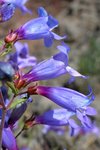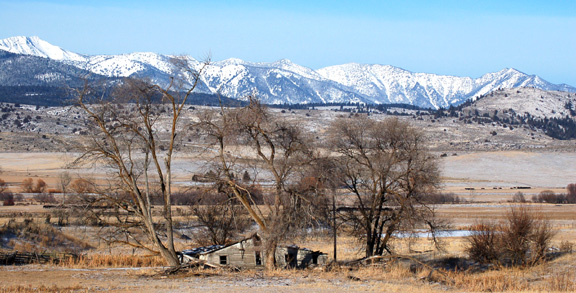In This Edition:
Western Wildlife
- Bighorn Sheep
- Bald Eagle Cam
- Tundra Swans
- Sage Grouse
New Cole Hearing Set; Release Conditions Modified
__________
Bighorn Sheep (Ovis canadensis)
In an earlier blog (MONDAY, MARCH 22, 2010--Baker Bighorns "Blinking Out", the threat to our Rocky Mountain Bighorn Sheep populations in Hells Canyon from disease transmitted by exposure to domestic sheep operations was discussed. The following is an assortment of other information about bighorn sheep, including sub-groups from Utah to Oregon and south to the Peninsular Ranges of California and the Trigo Mountains of Arizona. I will try to keep it brief with links to knowledgeable sources for the curious. The main point is that the several sub-populations of bighorn sheep are particularly sensitive to disease (the primary source being domestic sheep operations), hunting pressure, competition with both domestic animals and feral burros/horses, and habitat loss due to our ever expanding human activities.
Peninsular Bighorn Sheep

The photo above of endangered Peninsular Bighorn Rams was taken near Borrego Springs, in the western edge of the Colorado desert of California, while I was on a wildflower trip back in the spring of 1998. Unlike our northern bighorns, they have evolved to exist in a very difficult and increasingly endangered habitat in a desert environment close to burgeoning populations in people smothered Southern California. The following account from the Center For Biological Diversity explains some of the pressures they face.
SAVING THE PENINSULAR BIGHORN SHEEP
Peninsular bighorn sheep can get water from cacti, splitting the spiny barrel cactus with their horns and eating its watery insides. But thanks to sprawl and agribusiness, both sheep and succulent are increasingly rare: Up to 2 million bighorns roamed North America at the turn of the 20th century, but now only 70,000 remain. Peninsular bighorns, a so-called “distinct population segment” of these, number only in the hundreds. Still, their population has grown since they were federally protected, and thanks to the Center, they currently lay claim to nearly 850,000 acres of critical habitat. In 2007, we scored a big victory for part of that habitat when we won an injunction preventing development-associated grading in California’s Chino Canyon.
Unfortunately, the Peninsular bighorn’s critical habitat is in jeopardy. Responding to development pressure and a 2005 tribal lawsuit, the U.S. Fish and Wildlife Service proposed to dramatically reduce the area of land set aside for bighorn recovery, and its 2009 critical habitat proposal axed the original area by 55 percent — so the Center and four allies sued in October 2009.
But the Center won’t let this bighorn perish. Most recently, we joined the Sierra Club in suing the city of Palm Desert and California Fish and Game Department over a housing project that would affect the Bighorn Institute, a federally recognized recovery center for the sheep. In 2000, we won protections for the bighorn and more than 50 other endangered species in Southern California’s national forests; in 2001, we helped end off-road vehicle use of Dunn Road, illegally built in bighorn habitat — and we later challenged a plan to allow commercial vehicles on that road. We also advocate for protection of Peninsular bighorn in the central and southern parts of their range, including challenging off-road vehicle use in the Desert Cahuilla/Truckhaven area and fighting the expansion of a large gypsum mine, both in critical sheep habitat. We’re working to curb off-road vehicle impacts in the Yuha Desert and other border areas that provide a link to bighorns in Mexico.
While populations of "Mexican bighorn" on the east side of the Colorado in the Trigo Mountains of Arizona are said to be fairing better, I will never forget encountering the carcass of a large ram, minus the ever sought after head and horns, alongside a jeep road there in the 1990's. I have a photo somewhere, but it would take some time to locate it in my old boxes of photos, where ever they are. A major threat there, besides hunting, is the competition with feral burro populations that resulted from the burro's abandonment by miners in the earlier portion of the 20th century. The burros drain the lifeline of the sheep's water supply by drinking from and fouling the seasonal small "tanks," or rock-lined reservoirs created by spring and summer rains, and they feed on many of the same plants needed by the bighorn.
 Burro or African wild ass--Cute, but Very Destructive to Native Ecosystems
Burro or African wild ass--Cute, but Very Destructive to Native Ecosystems__
Rocky Mountain Bighorn with young ones at Flaming Gorge, Utah
Sheep Creek Bay on what is now Flaming Gorge Reservoir on the Green River in north east Utah is a pretty interesting place to visit. Besides the outsized geology and Kokanee spawning runs up Sheep Creek, it can be a good place to view transplanted Rocky Mountain bighorns. The following is a video with an old "Hi-8" Sony camera of some ewes and young ones from a visit there in July of 1994. Not spectacular footage, but somewhat enjoyable watching the lambs romp.
Again, Google Blog cuts off the right side of this wide screen video, so for the full view, go to:
Baby BigHorns on a Romp.m4v
These Sheep Creek bighorns are currently threatened with possible pneumonia infection from a herd on Goslin Mountain, some 15 miles away. The following article about the eradication of the Goslin herd by the Utah Division of Wildlife Resources, indicates that there are not yet signs of infection in the Sheep Creek herd, however, Ken Cole's article on the WAFWA report (WAFWA report summarizes pneumonia outbreaks in bighorn sheep) indicates the herd may already be infected. Note also that the bighorn transplants on Goslin Mountain were acquired from herds in Montana, several of which have been infected with pneumonia due to proximity to domestic sheep activities or allotments. Given that disease transmission from domestic sheep to bighorns has been documented for well over a decade, one wonders why the state wildlife agencies have not been more alert to the possibility of transplants spreading disease to wild bighorn.
See:
Disease forces DWR to kill bighorn sheep
By Brett Prettyman
The Salt Lake Tribune
Updated: 03/10/2010 10:31:18 AM MST
. . . . Wildlife biologists are shooting the entire bighorn sheep population on Goslin Mountain in the state's northeastern corner in an effort to stop a fatal and contagious disease from spreading to other nearby wild herds.
Twenty-five Rocky Mountain bighorn sheep from the Goslin Mountain herd have been shot by biologists in the steep canyon country north of the Green River and east of Dutch John in the past month. Many more have died from bacterial pneumonia, a malady that is striking a severe blow to bighorn herds in Montana, Nevada and Washington.
"Some states let the disease take its course when the herd is isolated, but we have documented cases of rams from the Goslin herd contacting other sheep and we don't want to risk infecting nearby herds and having a much larger die-off," said Leslie McFarlane, the wildlife disease specialist for the Utah Division of Wildlife Resources (DWR). . . . .
__
California Bighorn in Burnt River Canyon
 Bighorn Ewe in Burnt River Canyon
Bighorn Ewe in Burnt River CanyonThe Baker City office of the Oregon Department of Fish and Wildlife (ODFW) tells me that the Burnt River population of introduced California bighorns is in pretty good shape, with high pregnancy rates and good lamb and young adult survival, and may be more resistant to disease than the Hells Canyon Rocky Mountain bighorns. The photos of the ewe, having just watered at the river, were taken last weekend. ODFW expects them to be lambing soon near the higher rocky and cliff areas that comprise their escape habitat above the river. Northern and north eastern populations of bighorn lamb in May and June, but this population finds April more suitable. They estimate the ewe in the photo to be "at least a few years old," with the typical, spring shedding, ratty coat.
One wonders how these magnificent animals can cling to the narrow perches and near vertical surfaces of cliffs, while seemingly appearing a bit too self-assured in their movements from one impossible perch to another. The answer appears to be in the "cork-like," "spongy," or "rubbery," hooves, with each half, or toe, being separately controllable. Ungulates like deer and elk, on the other hand, have harder hooves that would tend to slip on steeply angled surfaces. See the photo below of the hooves of the same bighorn shown above, the "dew claws" also being spongy.
 Spongy hooves allow sure movement on steep and perilous terrain.
Spongy hooves allow sure movement on steep and perilous terrain.You can find a good deal of information from ODFW on Oregon Bighorn Sheep here:
Oregon's Bighorn Sheep and Rocky Mountain Goat Management Plan
See also:
WAFWA report summarizes pneumonia outbreaks in bighorn sheep
March 29, 2010 — Ken Cole
[Many good links here.]

_____________
Bald Eagle Cam
 Bald Eagle With Eggs in Difficult Conditions
Bald Eagle With Eggs in Difficult ConditionsCheck out the Bald Eagle Cam. Jan Taylor told me about this and it is now my home page on most days. This morning (Tuesday), the poor parent to be was pretty much completely covered with snow, protecting the developing new generation. I will try not to complain about the snow and cold again, but being a snow wimp, that scenario is unlikely. I just looked at the cam as I write on Tuesday night, and the nest is completely covered with snow, but the steadfast eagle is hunkered down, keeping the eggs warm as best he/she can. Frankly, I'm worried! Check it out.
_____________
Tundra Swans (Cygnus columbianus)
The Baker City Herald had a delightful photograph of tundra swans in flight overhead a week or two ago, as they are migrating through the area on their way to their breeding grounds on coastal High Arctic Tundra. A few days previous, on March 14, I saw 750 - 800 Tundra Swans on Unity Reservoir while doing my raptor count for the East Cascades Bird Conservancy. Here is a photo of but a few of them in the north arm of the reservoir. A key feature for identification purposes is the yellow "spot" near the eye in most adult tundra swans, which is lacking in the trumpeter swans found more often to the east (eg. Yellowstone) or the the north west coastal regions of Oregon and Washington in winter.
 Tundra Swans on Unity Reservoir
Tundra Swans on Unity ReservoirHere are a few more from Baker Valley back in March and April of 2008.
 Tundra Swans on "UPS/Freeway Ponds" (Northern Shoveler duck on left)
Tundra Swans on "UPS/Freeway Ponds" (Northern Shoveler duck on left)The following were photographed on a small pond along Lindley Road:
 Pond along Lindley Road
Pond along Lindley Road

____________
As sage grouse strut their stuff, debate over future rages
By Brett Prettyman
The Salt Lake Tribune
Salt Lake Tribune
Updated:03/31/2010 10:18:11 AM MDT
Everyone agrees the amazing mating ritual of the greater sage grouse is unique and entertaining. At issue is whether the bird is in need of federal oversight.[See link above for more]
The U.S. Fish and Wildlife Service recently found greater sage grouse in North America a candidate for protection under the Endangered Species Act, but decided against pursing the listing because it deems other species to have higher priority. Now three environmental groups say they intend to sue the federal government, charging that the Interior Department isn't doing its job.
The Center for Biological Diversity, Desert Survivors and Western Watersheds Project made the joint announcement this week. There are about 250 species listed as candidates for protection, and some have had that status for decades. The Interior Department assigns priority rankings from 1 to 12 for species on the list and the sage grouse was given an 8 ranking.
Environmentalists say protection is vital. Opponents, including Utah biologists, believe the state's management efforts are sound and that protection would unduly harm ranching, farming and energy interests.
"The only good place for a sage grouse to be listed is on the menu of a French bistro," Utah Congressman Jason Chaffetz said in a statement. "It does not deserve federal protection, period."
For Salt Lake City teacher Jim Carter, the birds provide an opportunity to watch a wonder of the wild close to home.
"I have driven to the end of the earth to see birds, but I've never seen anything like it," Carter said after a recent pre-dawn trip to a lek -- the traditional mating grounds of the grouse. "They would stand and look eye-to-eye and puff up their chest and make a drumming sound. If one didn't back down they would bash each other until one ran off. The females didn't seem very impressed."
Whether you view them as a wonder or a main course, Utah's two species of sage grouse are currently strutting their stuff on leks across the state. . . . .
Groups vow to sue because sage grouse unprotected
By MEAD GRUVER Associated Press Writer
Three environmental groups announced Monday they intend to sue the Interior Department for not protecting sage grouse as an endangered or threatened species.
The Center for Biological Diversity, Desert Survivors and Western Watersheds Project said the department violated the Endangered Species Act by classifying sage grouse not as threatened or endangered but merely as candidates for such protection.
Some of the roughly 250 species considered candidates for protection have been on the candidate species list for decades. The groups pointed out in an intent-to-sue letter Monday to Interior Secretary Ken Salazar that relatively few species in recent years have been gaining protection under the Endangered Species Act.
The average during the Clinton administration was 65 a year, the groups wrote, while the average since 2005 has been just three a year.
At that rate, they wrote, sage grouse are unlikely to be protected any time soon.
"This is an agency dragging its feet," said Rob Mrowka, an ecologist in Las Vegas for the Center for Biological Diversity.
An Interior spokeswoman declined to comment, citing department policy for matters in litigation.
Sage grouse are a mottled brown, football-sized bird found in Wyoming, Montana, Idaho, Nevada, California, Colorado, Utah, Washington, Oregon, South Dakota, North Dakota and Canada.
Wyoming is believed to host about half of the birds but much of their sagebrush habitat in the state's vast basins also is prime country for oil and gas drilling. In Nevada, sage grouse are threatened by cheatgrass, an invasive species prone to wildfires that burn native sagebrush.
The Interior Department announced March 5 that protection for sage grouse is warranted but precluded by higher priorities - other species deemed in greater need of protection. The department announced the same finding for the distinct Mono Basin sage grouse population along the California-Nevada line.
The oil and gas, wind and ranching industries greatly feared an endangered or threatened listing, which would have restricted many activities on public land across the West.
The Fish and Wildlife Service assigns each candidate species a priority number between one and 12, with lower numbers being higher priorities for protection. The sage grouse across its 11-state range was assigned a number eight. The Mono Basin population got a three.
About half of all candidate species are ones and twos, meaning even the Mono Basin sage grouse are halfway down the priority list, said Noah Greenwald, endangered species program coordinator for the Center for Biological Diversity.
Sage grouse are in "a purgatory that could last literally decades," Greenwald said.
Sixty days' notice is required ahead of filing a lawsuit under the Endangered Species Act. Western Watersheds Project already has filed a complaint over sage grouse, a case in Boise, Idaho, that led to the candidate species finding.
Western Watersheds Project contested the candidate species finding three weeks ago by filing a supplemental complaint in its case. Executive Director Jon Marvel suggested the other groups could join Western Watersheds Project lawsuit or file elsewhere.
Mrowka said the groups haven't decided where they might sue.
© 2010 Miami Herald Media Company. All Rights Reserved.
http://www.miamiherald.com
_____________________
New Cole Hearing Set to Hear Motions to Supress; Release Conditions Modified
[3/31/10]
Yesterdays pretrial conference in the Brian Cole sex abuse case resulted in papers being filed with the Circuit Court that indicate a "motions to suppress" hearing is set for Circuit Court on May 21, 2010, from 9 AM to Noon, and from 1:30 PM to 5 PM. The clerk's office indicates that such hearings are public. While the one page notice doesn't explicitly state what is to be suppressed, normally a motion to suppress seeks to suppress evidence gathered by the prosecution during the investigation. A formal motion with more details is to be filed with the court by April 15th. Hopefully the hearing will actually take place and move this case towards a long delayed trial.
On March 24th, in papers filed the 26th, Circuit Court Judge Gary Reynolds modified Brian Cole's release conditions.
The new order requires Mr. Cole to first submit travel plans to the Attorney General's office before traveling out of state, and also requires he sign a "Waiver of Extradition" which he has done. It also allows Mr. Cole to have contact with his minor daughter, "but he shall not have contact minors [sic] or be in places where minors congregate such as schools, parks, churches, or shopping malls unless supervised by his wife. . . ."











